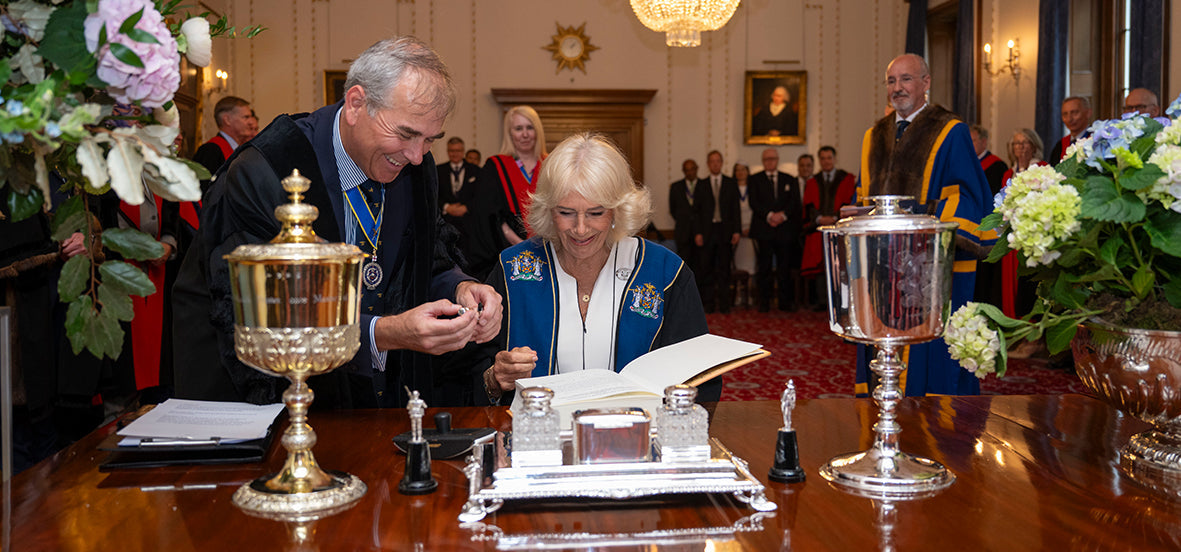On 15th July 2025 - Queen Camilla lifted a silver Conway Stewart pen and signed the oath book at Stationers’ Hall, the motion lasted only a moment. Yet that graceful line linked Britain’s newest queen consort to the oldest guild devoted to the written word — a fellowship that has guarded, censored and celebrated communication since medieval times.
The Stationers’ Company began in 1403, when scribes and book‑binders set up fixed stalls — or “stations” — along Ave Maria Lane beside St Paul’s Cathedral. Working by candle‑light, they copied prayers and chronicles, then stitched them into leather‑bound volumes. Quills and inkwells were their tools; parchment their canvas.
The printing press changed everything. William Caxton’s movable type flooded London with affordable pamphlets, plays and political tracts. To keep the torrent in check, Queen Mary I granted the guild a royal charter in 1557. From then on, the Company recorded copyrights and could seize unlicensed works, shaping what Britons read for centuries — from Shakespeare’s quartos to seditious broadsides.
Fire consumed the first hall in 1666, but the Stationers rebuilt within a decade, lining new brick walls with oak panels and stained glass. The present chamber still glows much as it does in John Crowther’s 1890 water‑colour: heraldic banners above wooden benches, coloured light glazing an ancient chequered floor.
Now called the Worshipful Company of Stationers and Newspaper Makers, the guild backs apprenticeships in print, broadcast and digital media, tends an unrivalled archive and awards scholarships that keep ideas flowing in a wired world.
Conway Stewart, also a member of the guild, is part of the same story. It was founded in 1905 at 13 Paternoster Row—just steps from the hall—and today hand‑builds every pen in its workshop in Emsworth, Hampshire, keeping alive the craft first practised in the shadow of St Paul’s.
John Crowther’s 1890 water‑colour of Stationers' Hall


Kommentar hinterlassen